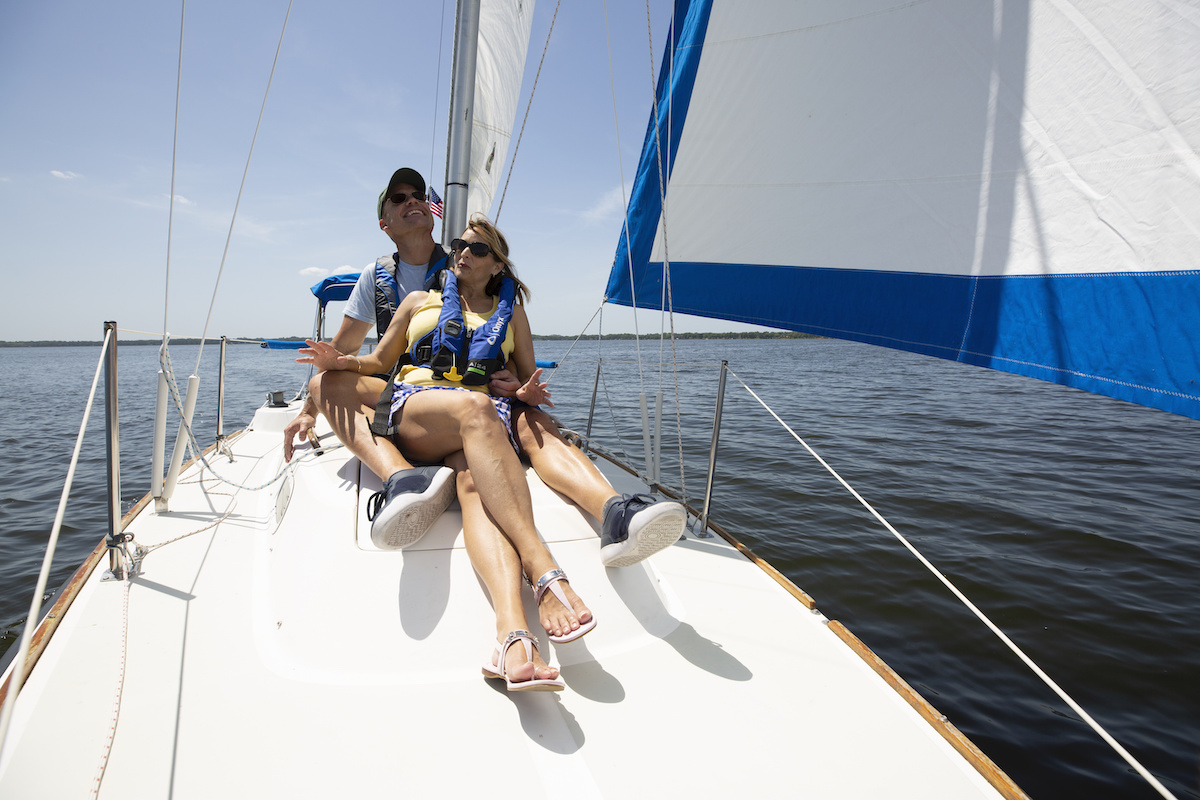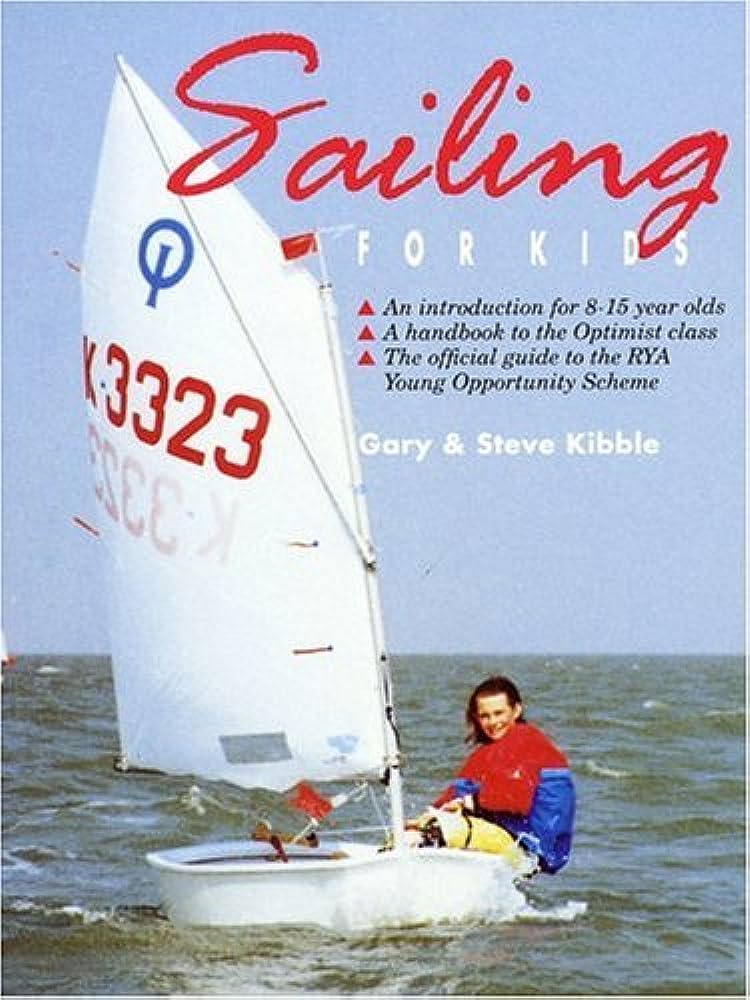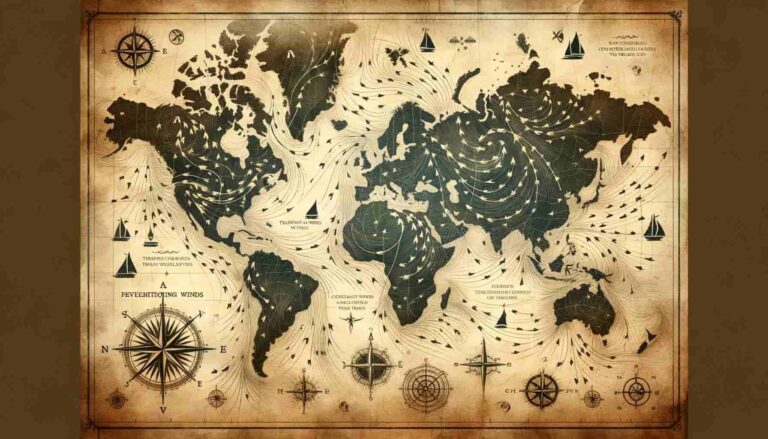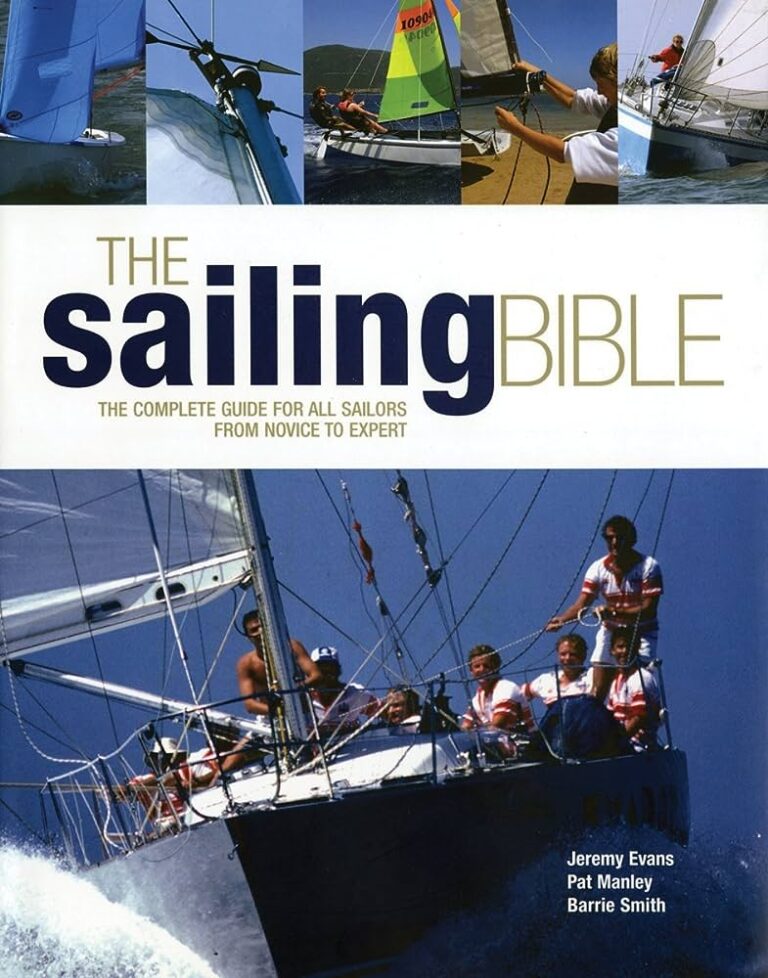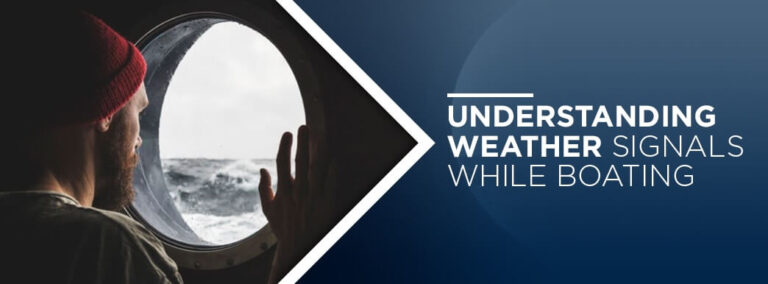Safety First: Essential Safety Precautions for New Sailors
Safety first: New sailors should prioritize essential safety precautions to ensure a secure boating experience. Whether setting sail for the first time or honing their skills, sailors need to understand and follow safety measures to prevent accidents and navigate waters confidently.
Understanding The Basics
New sailors must prioritize safety precautions to ensure a safe and enjoyable sailing experience. Understanding the basics, such as wearing life jackets, checking weather conditions, and knowing emergency procedures, is essential for every newcomer venturing out to sea. Stay prepared and stay safe!
Importance Of Safety Precautions On A Boat
Sailing can be an exhilarating experience, but it’s important to prioritize safety on the water. Whether you’re a new sailor or an experienced one, understanding and practicing safety measures can make all the difference in ensuring a smooth and enjoyable voyage.
Safeguarding yourself and your fellow passengers from potential hazards is crucial. Additionally, having the necessary safety equipment on board will give you peace of mind and protect you in unforeseen circumstances. Let’s delve into the essentials of safety precautions for new sailors.
Identifying Potential Hazards On A Sailboat
Before embarking on any sailing adventure, it’s essential to be aware of potential hazards that may arise on a sailboat. By identifying these hazards in advance, you can take preventive measures, ensuring the safety of everyone on board. Here are some common hazards to watch out for:
- Slippery surfaces: Wet decks and surfaces can pose a significant risk of slips and falls. It’s crucial to wear non-slip footwear and remain cautious when moving around the boat.
- Unpredictable weather conditions: Weather patterns can change rapidly while sailing, increasing the risk of strong winds, heavy rains, or storms. Keep an eye on weather forecasts and be prepared to alter your plans accordingly.
- Collision with other boats or objects: Sailing in crowded areas or near rocky shores increases the likelihood of collisions. Maintain a safe distance from other vessels and pay attention to your surroundings at all times.
- Capsizing or falling overboard: Accidents can happen, and it’s important to be prepared for unexpected situations. Understanding the basics of boat stability and knowing how to react in case of a capsize or someone falling overboard is crucial for everyone’s safety.
Essential Safety Equipment Every Sailor Should Have
Equipping your sailboat with the necessary safety gear is a fundamental part of responsible sailing. The right equipment not only helps prevent accidents but also ensures you have what you need in case of an emergency. Here are the essential safety items you should have on your sailboat:
- Life jackets: Each passenger should have a properly fitting and Coast Guard-approved life jacket. Ensure they are easily accessible and in good condition.
- Fire extinguisher: Have at least one fire extinguisher on board, preferably in an easily accessible location. Regularly check its pressure and ensure everyone knows how to use it.
- First aid kit: A well-stocked first aid kit is vital for addressing minor injuries or providing initial care in more serious situations. Include items such as bandages, disinfectant, pain relievers, and any necessary medications.
- Emergency signaling devices: Carry essential signaling devices like flares, a whistle, a waterproof flashlight, and a distress flag. These items can help alert others of your distress and aid in rescue operations.
- Navigation and communication tools: Equip your sailboat with up-to-date charts, a compass, and a reliable marine radio or satellite communication device to navigate and communicate effectively.
Remember, safety should always be the top priority when sailing. By understanding the importance of safety precautions, identifying potential hazards, and having the necessary safety equipment on board, you’ll be well-prepared to enjoy your sailing adventures while keeping yourself and others safe.

Credit: www.military.com
Be Prepared: Safety Measures Before Setting Sail
As new sailors embark on their journey, prioritizing safety is paramount. This blog post outlines essential precautions to take before setting sail, ensuring a secure and enjoyable experience on the water.
Before embarking on any sailing adventure, it is crucial for new sailors to prioritize safety and take necessary precautions. By following these essential safety measures, you can ensure a smooth and secure journey on the open waters. Paying attention to weather conditions and forecasts, maintaining and inspecting your boat regularly, and securing personal safety gear and emergency supplies are all crucial steps to guarantee a safe sailing experience.
Let’s dive deeper into each of these key safety measures:
Checking Weather Conditions And Forecast
It is essential to stay informed about the weather conditions before setting sail. Unpredictable weather can pose significant risks and impact your safety on the water. Consider the following points:
- Monitor weather forecasts from reliable sources and government agencies.
- Take note of wind speeds, wave heights, and any upcoming storms or adverse weather conditions.
- Be aware of any weather changes during your sailing trip and have contingency plans in place.
Ensuring Proper Boat Maintenance And Inspection
Maintaining your boat in good condition is vital to prevent any mechanical or structural issues while at sea. Follow these maintenance practices:
- Regularly inspect your boat for any signs of wear and tear, paying close attention to the hull, rigging, and engine.
- Check all safety equipment, including life jackets, fire extinguishers, and distress signals, to ensure they are in proper working order.
- Be diligent in keeping up with routine maintenance tasks, such as checking fuel levels, engine oil, and battery condition.
Securing Personal Safety Gear And Emergency Supplies
In the event of an unforeseen emergency, having the right safety gear and supplies can make a significant difference. Prioritize the following essentials:
- Make sure everyone on board has a well-fitting and approved life jacket.
- Carry a fully stocked first aid kit and familiarize yourself with its contents.
- Keep essential emergency supplies on board, such as flares, a waterproof flashlight, a whistle, a sturdy knife, and a waterproof VHF radio.
- Pack enough food, drinking water, and medications for the duration of your trip.
Remember, safety should always be the highest priority when sailing. By following these safety measures and being prepared, you can greatly minimize the risks and ensure an enjoyable and secure sailing experience.
On-Board Safety Practices
Ensure the safety of new sailors with these essential on-board safety practices. From wearing appropriate safety gear to practicing emergency drills, these precautions prioritize safety above all else.
Sailing is an exhilarating experience that allows you to connect with nature and explore the open waters. However, it’s important to prioritize safety before setting sail. By adopting essential safety precautions, you can minimize risks and ensure a safe and enjoyable journey.
In this section, we will focus on three vital on-board safety practices: wearing personal flotation devices (PFDs) at all times, properly using safety harnesses and tethers, and understanding and practicing man overboard (MOB) procedures.
Wearing Personal Flotation Devices (Pfds) At All Times:
- Wearing a PFD is crucial for every sailor, regardless of their swimming abilities or the distance from the shore.
- PFDs provide buoyancy and help keep you afloat, preventing potential drowning accidents.
- Ensure that your PFD is properly fitted and in good condition before departing.
- Remember, accidents can happen unexpectedly at any point during your sailing journey, so wearing a PFD consistently is of utmost importance.
- By adhering to this safety practice, you prioritize your well-being and the well-being of your sailing companions.
Properly Using Safety Harnesses And Tethers:
- Safety harnesses and tethers are essential tools used to prevent falls overboard and keep sailors secured on deck.
- Before setting sail, make sure you are familiar with the correct usage of safety harnesses and tethers.
- Attach the tether to a sturdy anchor point, such as jacklines or strong points on the vessel.
- Always wear your harness when on deck, especially during rough weather conditions or while performing tasks that require you to be out of the cockpit area.
- Remember to adjust the length of the tether according to your movements, allowing you enough room to carry out necessary tasks while remaining safe and secure.
Understanding And Practicing Man Overboard (Mob) Procedures:
- The risk of a crew member falling overboard is a reality all sailors must be prepared for. In such an event, immediate action is crucial to ensure quick and successful rescue operations.
- Memorize and regularly practice MOB procedures with your sailing crew.
- Assign specific roles and responsibilities to ensure a coordinated response during an emergency.
- Initiate the MOB procedure by calling out “Man Overboard!” Loudly and clearly, to alert others on board.
- Utilize any available lifesaving equipment, such as floating rings or throw bags.
- Maneuver the vessel to mark the MOB spot and deploy a man overboard marker or buoy to aid in identifying the location.
- Communicate effectively with the crew and execute the rescue plan swiftly and safely.
By adopting these on-board safety practices, you can enhance your sailing experience while ensuring the safety of yourself and your fellow sailors. Remember, prioritizing safety should always be the first step before embarking on any sailing adventure. Stay safe, stay prepared, and enjoy the mesmerizing world of sailing.
Navigation And Sail Handling Precautions
New sailors must prioritize safety by taking navigation and sail handling precautions. This includes proper training, following safety guidelines, being aware of weather conditions, maintaining equipment, and practicing good communication on board.
Understanding Navigation Rules And Marker Systems
Navigating a sailboat involves much more than simply steering in the right direction. To ensure a safe voyage, it is crucial for new sailors to understand navigation rules and marker systems. Here are some key points to keep in mind:
- Learn the basics: Familiarize yourself with the International Regulations for Preventing Collisions at Sea (COLREGS). These rules outline how to navigate safely, including right-of-way rules, lights and shapes, and sound signals.
- Understand buoy markers: Buoy markers are essential for navigating waterways. Green buoys mark the starboard (right) side of the channel, while red buoys mark the port (left) side. Keep these markers on the correct side of your boat to stay on course.
- Recognize navigation aids: Pay attention to navigation aids such as lighthouses, beacons, and daymarks. These structures provide valuable information about your position and the surrounding hazards.
- Stay updated on charts: Regularly update your nautical charts to ensure accuracy. These charts include important details like depth contours, obstructions, and navigational aids. Use them to plan your route and avoid potential hazards.
Rigging Safety: Inspecting And Maintaining Sailboat Ropes And Lines
The rigging of a sailboat plays a vital role in its overall safety and performance. To ensure rigging safety, it is important to inspect and maintain sailboat ropes and lines regularly. Here are some important precautions to consider:
- Perform regular inspections: Inspect all ropes and lines before each sailing trip. Look for signs of wear, fraying, or damage. Replace any ropes that appear compromised to avoid the risk of a failure while at sea.
- Clean and dry ropes: Keep ropes clean and free from debris, as dirt and moisture can weaken the fibers over time. After sailing in saltwater, rinse the ropes with fresh water to prevent corrosion and salt buildup.
- Store ropes properly: Avoid coiling ropes tightly, as this can cause kinks and weaken the fibers. Instead, loosely coil them or hang them in a figure-eight shape to maintain their integrity.
- Use protective covers: Protect high-wear areas of ropes, such as those in contact with cleats or winches, with protective covers. These covers help prevent abrasion and extend the lifespan of the ropes.
Handling Sail Changes And Reefing In Changing Weather Conditions
Sail changes and reefing are essential skills for new sailors to master, especially when facing changing weather conditions. Here are some precautions to take when handling sail changes and reefing:
- Monitor weather forecasts: Stay informed about the weather conditions before heading out on a sail. Keep an eye on changing wind speeds and direction, as these can impact the need for sail changes or reefing.
- Communicate effectively: Proper communication among the sailing crew is vital during sail changes and reefing maneuvers. Ensure that everyone understands their roles and follows clear instructions to prevent accidents and confusion.
- Reef early: When strong winds are anticipated, it is wise to reef (reduce the sail area) early. This helps maintain control and stability of the boat in gusty conditions.
- Practice reefing techniques: Familiarize yourself with reefing techniques specific to your sailboat. Know how to secure the reefing points properly and adjust the tension of the reefed sail to maintain optimal performance.
By understanding navigation rules and marker systems, inspecting and maintaining rigging, and handling sail changes and reefing correctly, new sailors can prioritize safety while enjoying their sailing adventures. Remember, practice and experience are key to becoming a skilled and confident sailor.
Anchoring And Mooring Safety
New sailors must prioritize safety when it comes to anchoring and mooring. By following essential precautions like proper use of anchor equipment, understanding weather conditions, and maintaining a safe distance from other vessels, they can ensure a secure and incident-free sailing experience.
Safety is paramount for all sailors, especially beginners.
Safely Anchoring A Sailboat: Planning And Execution
When it comes to anchoring a sailboat, it’s crucial to have a well-thought-out plan and execute it with caution. Here are some important considerations:
- Check the weather and choose a suitable anchorage area: Before dropping anchor, be sure to review the weather forecast and select a location that provides adequate protection from prevailing winds and waves.
- Determine the proper scope for anchoring: The scope represents the length of anchor rode (combination of chain and line) needed to ensure stability. As a general rule, aim for a scope ratio of 5:1 (5 feet of rode for every 1 foot of water depth) in normal conditions, and 7:1 in rough weather.
- Securely set the anchor: Carefully lower the anchor to the seabed, allowing it to dig in and set. A slight reverse engine thrust can aid in setting the anchor properly. Monitor the anchor’s holding power by using visual references or a depth sounder.
- Test the anchor’s holding: After setting the anchor, apply a gentle backward pressure to ensure it is holding securely. If the anchor drags, you may need to reposition or reset it.
Mooring Etiquette And Precautions
Mooring your sailboat requires following proper etiquette and taking necessary precautions. Consider the following:
- Respect mooring regulations and guidelines: Familiarize yourself with local mooring regulations and adhere to designated mooring areas. Avoid anchoring too close to other vessels or obstructing navigational channels.
- Communicate with nearby mooring neighbors: It’s courteous to establish communication with nearby boaters to avoid any potential conflicts or misunderstandings. Agree on appropriate distances and discuss any specific concerns or requirements.
- Regularly inspect mooring lines and attachments: Ensure that mooring lines are in good condition and adequately secured to your sailboat. Regularly check for wear and tear, replacing any frayed or weakened lines promptly.
- Use adequate fenders and bumpers: Protect your boat and neighboring vessels by using fenders and bumpers while moored. These floating devices provide cushioning and prevent damage from accidental collisions or rough waters.
Dealing With Anchor Drag And Unforeseen Situations
Even with proper preparation, unexpected situations can arise. Here’s how to handle anchor drag and other unforeseen events:
- Be vigilant and monitor your anchor: Keep a watchful eye on your anchor to detect any signs of drag. If you notice the boat veering off course or the anchor losing its grip, take immediate action.
- Act promptly in case of anchor drag: If anchor drag occurs, first, increase engine power and attempt to reset the anchor. If unsuccessful, it might be necessary to relocate to a different anchorage area or seek shelter in a marina until conditions improve.
- Have a contingency plan: Always have a backup plan in case your primary anchor fails or conditions become hazardous. Carry a second anchor, such as a storm anchor, and familiarize yourself with emergency procedures to ensure the safety of your sailboat and crew.
By following these anchoring and mooring safety precautions, you can enjoy your sailing adventures with peace of mind, knowing that you are prioritizing the safety of both your vessel and those around you. Stay informed, be prepared, and sail confidently on the open waters.
Dealing With Emergencies At Sea
New sailors must prioritize their safety at sea by following essential precautions. These measures include familiarizing themselves with emergency procedures, securing necessary safety equipment, ensuring proper communication channels, practicing regular safety drills, and being aware of weather conditions. By prioritizing safety, new sailors can effectively deal with emergencies at sea.
Understanding Mayday Procedures And Emergency Communications:
- In times of emergencies at sea, it is crucial for sailors to understand the Mayday procedures and effective emergency communications. Here’s what you need to know:
- Mayday Calls: Familiarize yourself with the Mayday call, which is the international distress signal used when immediate assistance is needed. It is crucial to transmit this call accurately for prompt response.
- Emergency Communications: Having a reliable means of communication on board is essential. Ensure that you have a VHF radio or alternative communication devices to contact emergency services or nearby vessels in case of emergencies.
- Preparing Emergency Messages: When making emergency calls, remember to follow a structured format: state the word “Mayday” three times, provide the vessel’s name, position, nature of the emergency, number of people on board, and any immediate actions taken. This concise and clear manner will help responders understand the situation quickly.
Handling Medical Emergencies And First Aid On A Boat:
- Dealing with medical emergencies while sailing requires preparation and knowledge of basic first aid techniques. Here’s what you need to keep in mind:
- First Aid Kit: Ensure that your boat is equipped with a comprehensive first aid kit that includes essential items such as bandages, adhesive tape, antiseptic solutions, sterile gauze pads, and medication for common ailments. Regularly check and replenish supplies to keep it up to date.
- Basic First Aid Techniques: Familiarize yourself with essential first aid techniques such as CPR (Cardiopulmonary Resuscitation), treating wounds, burns, fractures, and managing seasickness. Consider attending a first aid course specifically designed for boaters.
- Emergency Contact Information: Keep a list of emergency contact numbers in a waterproof container or bag and make sure everyone on board knows where to find it. Include local coast guard stations and nearby marinas for prompt assistance.
Capsizing And Abandoning Ship: Survival Techniques And Rescue Signals:
- Although sailing is generally safe, it’s important to be prepared for worst-case scenarios such as capsizing or needing to abandon your vessel. Here are some survival techniques and rescue signals to remember:
- Capsizing: If your boat capsizes, stay calm and remember to stay with your vessel if possible. It offers the highest chance of being spotted by rescuers. Use signaling devices such as a whistle or flares to attract attention and let others nearby know you need help.
- Abandoning Ship: In extreme situations when abandoning ship is necessary, ensure that everyone on board is wearing life jackets or personal flotation devices (PFDs). Deploy survival rafts, life rafts, or any available floatation devices. Remember to stay together as a group and follow proper procedures for signaling distress.
- Rescue Signals: Keep signaling devices in readily accessible locations on your boat. These can include flares, smoke signals, mirrors, or signal flags. Familiarize yourself with the appropriate use of these signals, as they can greatly increase your chances of being located by rescuers.
Remember, being prepared and knowledgeable about emergency procedures is essential for your safety and the safety of everyone on board. Stay vigilant, keep your equipment in good condition, and practice these safety measures regularly to ensure a safe and enjoyable sailing experience.
Frequently Asked Questions For Safety First: Essential Safety Precautions For New Sailors
What Precautions Should One Take While Sailing On A Boat?
To ensure safety while sailing on a boat, follow these important precautions: 1. Wear a life jacket at all times to stay afloat in case of emergency. 2. Check weather forecasts before going out to avoid dangerous conditions. 3. Learn basic navigation skills and understand the rules of the water.
4. Carry proper safety equipment, such as a first aid kit and emergency radio, to handle unforeseen situations.
What Is A Good Luck Saying For Sailors?
“Fair winds and following seas” is a popular good luck saying for sailors.
Why Should You Be Careful When Sailing In A Boat?
Be cautious when sailing in a boat to prevent accidents and ensure personal safety.
What Is Safety Position In Sailing?
Safety position in sailing refers to the designated area on a boat where passengers congregate during emergencies or rough weather.
Conclusion
Prioritizing safety is crucial for new sailors to ensure a smooth and enjoyable sailing experience. By following the essential precautions discussed in this blog post, sailors can mitigate risks and enhance their overall safety on the water. First and foremost, investing in proper safety equipment such as life jackets, harnesses, and personal locator beacons is a must.
Additionally, staying informed about weather conditions, maintaining regular communication, and practicing emergency drills are all essential elements of a safe sailing trip. Moreover, taking advantage of sailing courses and seeking guidance from experienced sailors can provide valuable knowledge and expertise.
Lastly, remaining vigilant and alert while on board, being mindful of other vessels and potential hazards, will contribute to a safer and more enjoyable sailing experience. By adopting a safety-first mindset, new sailors can confidently embark on their nautical adventures while minimizing risks and maximizing their enjoyment of the open water.

